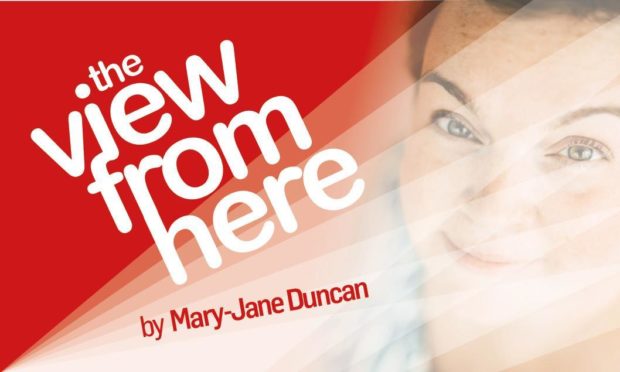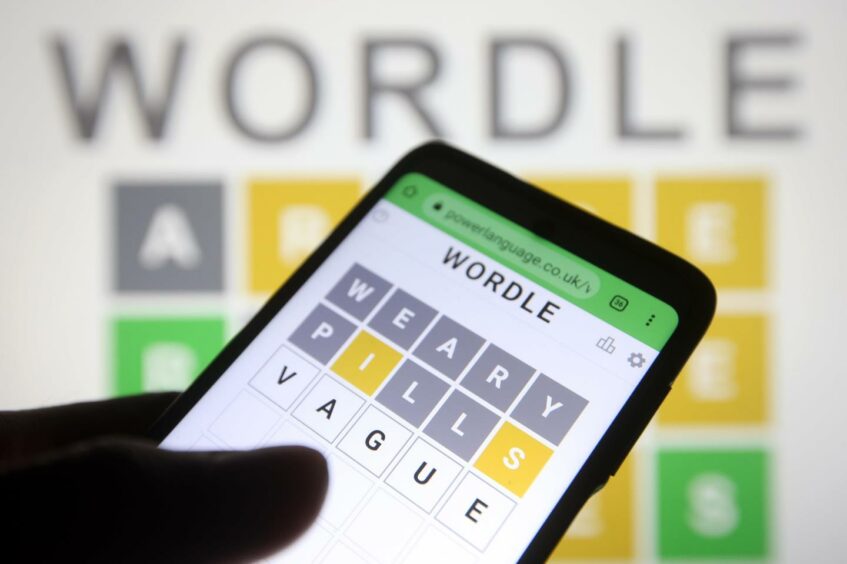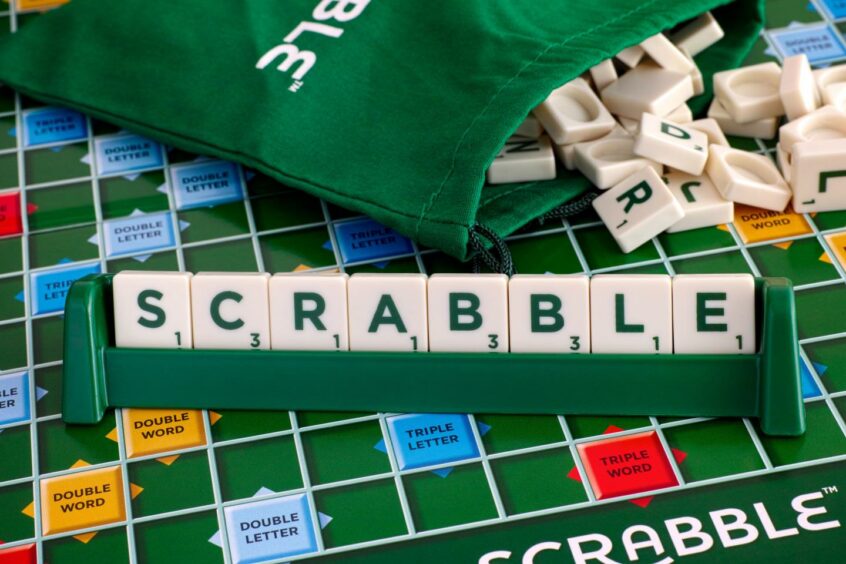Usually when a new craze sweeps through, I stubbornly refuse to take part until my curiosity peaks, and I reluctantly give in.
It’s possibly just me going round thinking ‘that would make a great column’ or thinking in terms of social media posts?
However, I now have a five-letter word obsession to tax my muddled brain.
My newest daily preoccupation started a few weeks ago, late to the party as usual.
Having ignored friends posting their everyday results to social media, I didn’t entertain it at all. Obstinately too busy to introduce a new time-consuming distraction to my routine.
Until I tried Wordle.
Admittedly, I like a puzzle. We have stacks of Sudoku and word-search books for moments when I’m not quite myself. Sometimes I even remember to pop one in my bag for appointments in a vain attempt to stop idle hands.
For those of you not yet in the know, Wordle is not an app on your mobile, although you can access it on your phone.
Just google and it pops up in all its simple black and white glory. No adverts. No banners. No popups. Nothing to cajole you into spending more time than you have.
It’s like a super-fun-size snack for your brain just breezing through your morning without stealing hours from your day.
While all other games send notifications demanding your return throughout the day, Wordle simply wants a casual, daily hook up. No more commitment needed here.
Just a few minutes a day please and then ‘see you tomorrow’, unlike other things on the internet, meaning there is no harm to it. At least till you launch your phone in a huff!
The Wordle success story
Invented by a British born, NYC based, software engineer, Josh Wardle (loving the play on his name) designed the quiz for his partner, Palak Shah.
Knowing her love of a word game, he kept the rules are simple and it’s as easy to understand as it is addictive. It’s also (currently) free.
Players try to guess a five-letter word. In only six attempts. Start by entering any word and it tells you what letters are spot on. Grey letters are wrong. Yellow letters feature but are in the wrong spot, green letters are right AND in the correct place.
Everyone playing is guessing the same word and can post their attempts without spoilers, making it competitive without pretention. And, frankly, if it’s good enough for Richard Osman, it’s good enough for me.
From simple beginnings
The one down side of the design? Once you’ve completed the word, you must wait a day until a new riddle appears. A daily brain fog clearer if you will.
Wardle designed Wordle, without a team of engineers, as a pandemic gesture for Ms Shah. She enjoyed it so much they shared it with their friends on family on WhatsApp.
From November 1 2021 when it was first played by 90 people, to 300,000 two months later, Mr Wardle has now sold the game to the New York Times for a ‘low’ seven figure sum.
I love that Wordle isn’t the first NYC puzzling story.
Another British-born New Yorker, Arthur Wynne, wanted to liven up the ‘fun’ section of the newspaper he was editor of.
Devising a blank grid, he placed blackened out squares and created clues for words going across and down. The ‘Word-Cross Puzzle’ of the New York World was born in December 1913.
Renamed the ‘Crossword’ due to a typographical error, it was the most popular thing in the paper within days.
Then in 1934 New York architect Alfred Mosher Butts, lost his job during the Great Depression, so decided to create a game to play against his wife Nina.
Using the word ‘quixotic’ across two triple word scores, she beat him first time, and Scrabble was born.
Eventually, Macy’s started stocking it and two years later, more than 6000 boards a week were being sold.
Wardle’s entrepreneurial, simple act of love has given all puzzlers a gift and it’s not even robbing us of our time.
Posted only once every day, its restraint is possibly its greatest strength.
I love a love story, and I love a puzzle.
Dundee might have given us Lemmings and Grand Theft Auto but maybe I need a quick trip to the Big Apple for some riddling inspiration.




